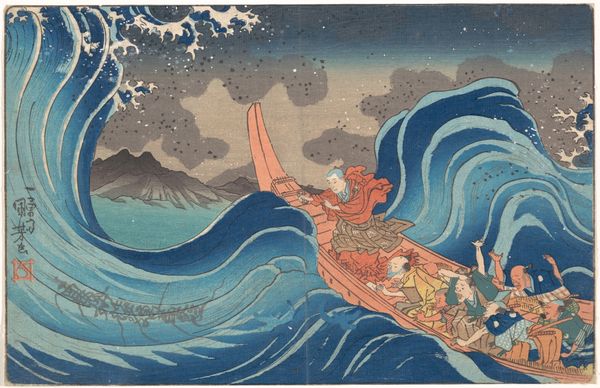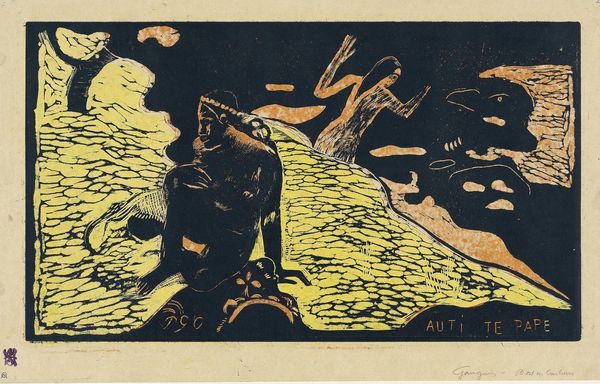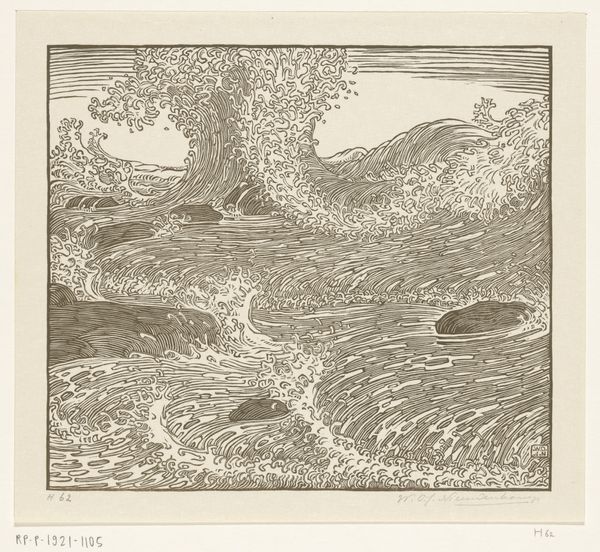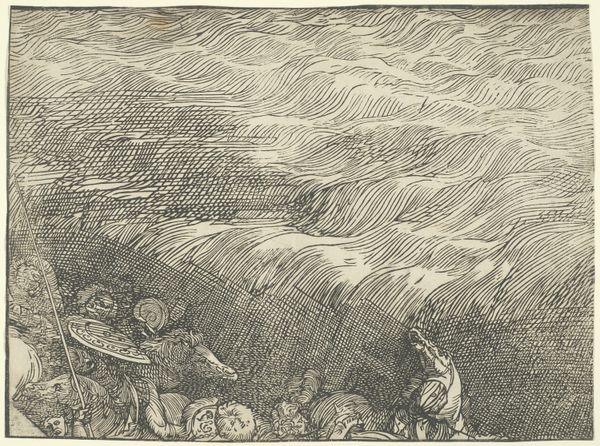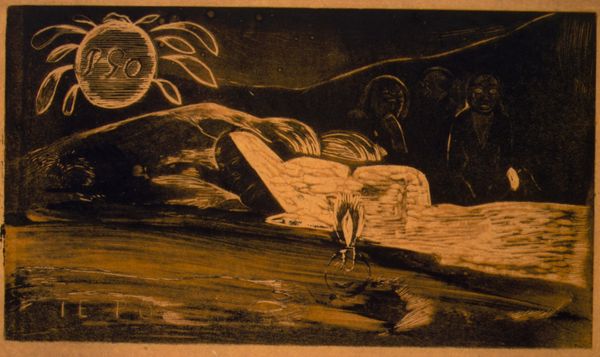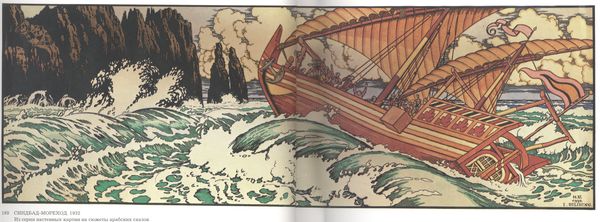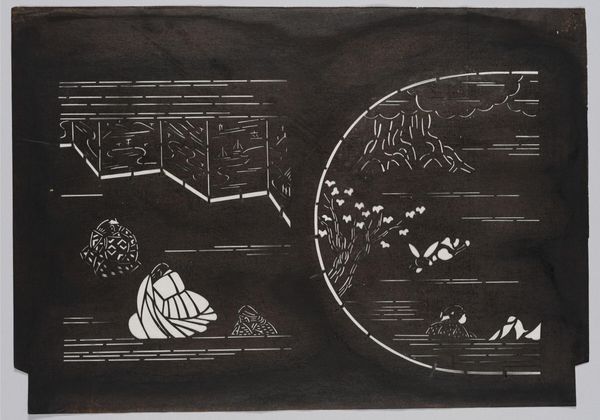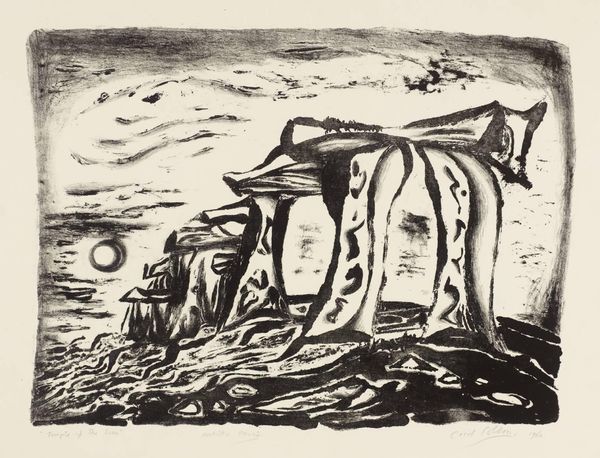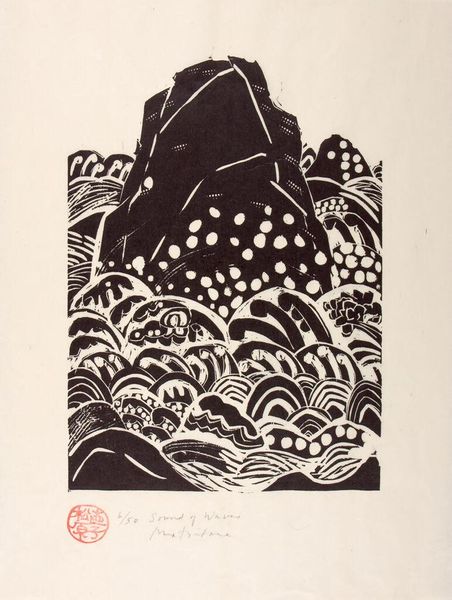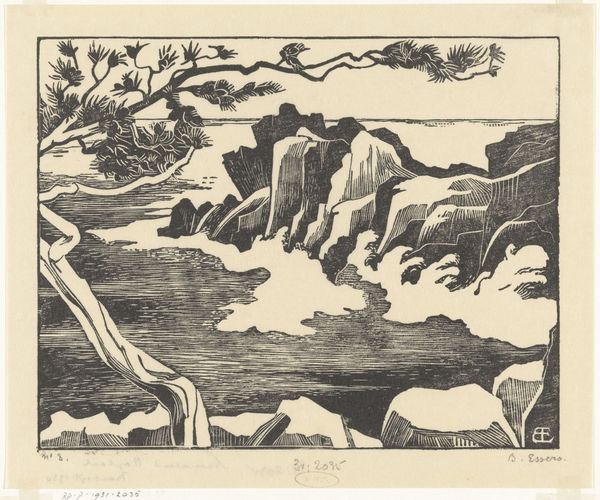
Copyright: Public domain
Editor: So, this is Ivan Bilibin's "Illustration for Alexander Pushkin's 'Fairytale of the Tsar Saltan,'" created in 1905. It's a really striking graphic piece. The waves have this almost menacing feel, swallowing up the barrel in this vast, starlit sea. What do you see in it? Curator: The barrel adrift is not just a container; it's a symbol of fate, of being cast adrift into the unknown. Look how the waves curl, echoing Japanese Ukiyo-e prints. Bilibin isn't just illustrating a fairytale, he's tapping into something primal. He's visualizing cultural anxieties of being lost in a turbulent world. The multitude of stars...do they offer guidance or do they highlight the sheer, indifferent vastness of the cosmos? Editor: I see what you mean about the Ukiyo-e influence, and the barrel as fate, that makes sense. The stars…maybe it’s both guidance *and* vastness. The way the light is painted makes it feel chaotic as much as beautiful. Curator: Exactly! Think about folk traditions. Water, especially the sea, often represents the unconscious, the source of life, but also of immense danger. The barrel is containment, a fragile attempt to control what is inherently uncontrollable. What does it *mean* to put someone in the sea inside of a barrel? Editor: It means isolation, doesn't it? Being utterly alone and at the mercy of something much bigger. This fairy tale image becomes quite profound with that in mind. Curator: Precisely. And by drawing on these potent cultural symbols, Bilibin elevates what could have been a simple illustration into a powerful commentary on human vulnerability. Editor: That’s a perspective I definitely hadn’t considered initially. I’ll remember to think about the deeper symbols at play in illustration art!
Comments
No comments
Be the first to comment and join the conversation on the ultimate creative platform.
